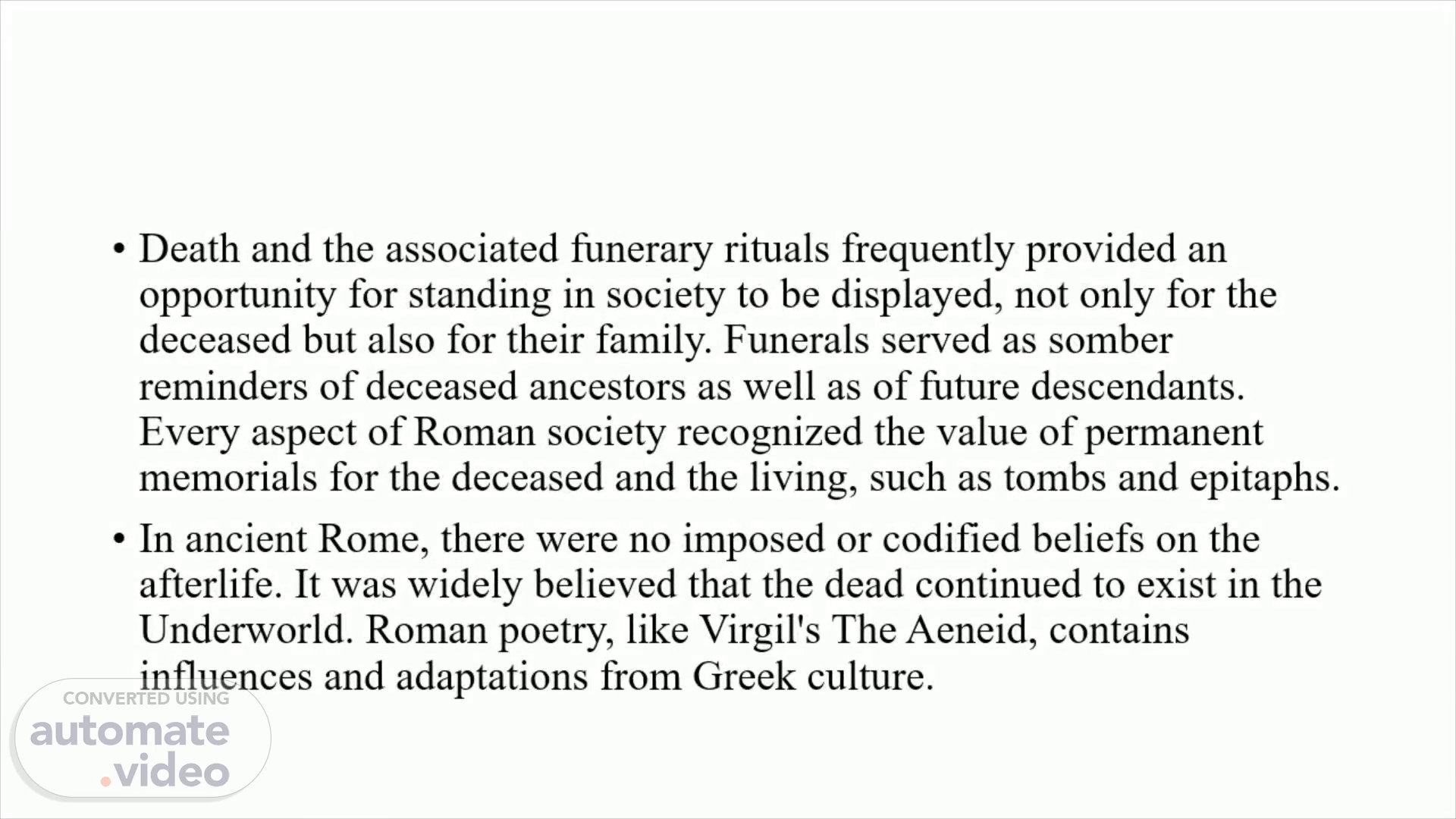
Page 1 (0s)
[Audio] Death and the associated funerary rituals frequently provided an opportunity for standing in society to be displayed, not only for the deceased but also for their family. Funerals served as somber reminders of deceased ancestors as well as of future descendants. Every aspect of Roman society recognized the value of permanent memorials for the deceased and the living, such as tombs and epitaphs. In ancient Rome, there were no imposed or codified beliefs on the afterlife. It was widely believed that the dead continued to exist in the Underworld. Roman poetry, like Virgil's The Aeneid, contains influences and adaptations from Greek culture..
Page 2 (45s)
[Audio] We can obtain an idea of the significance of death in ancient Rome from the objects that have survived to the present day. Romans who were extremely superstitious would go to considerable efforts to avoid anything connected to death. Others seem to have surrounded themselves with objects that symbolize death, such as mosaics of skulls and sculptures of skeletons. These images have been viewed as reminders of the fleeting nature of life and the value of leading fulfilling lives. In ancient Rome, many believed that dying could cause disease or injury to the living. As a result, there was a clear division between the living and the dead. The dead could only be buried outside of a perimeter known as the pomerium, which surrounded populated places. Travelers would frequently have noticed tombs dotting the main highways leading into and out of cities and towns beyond the pomerium..